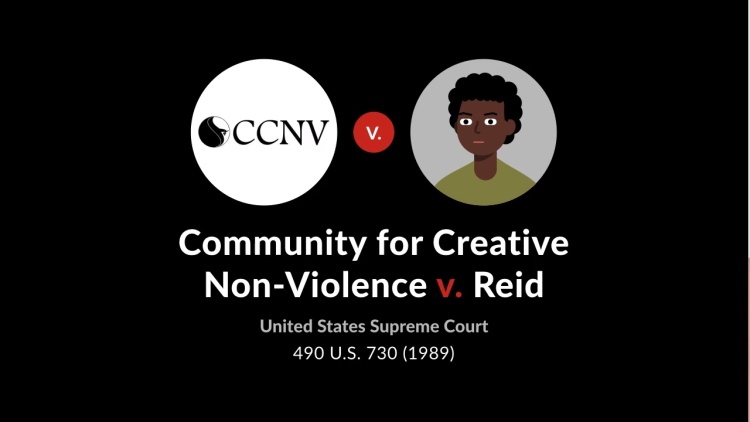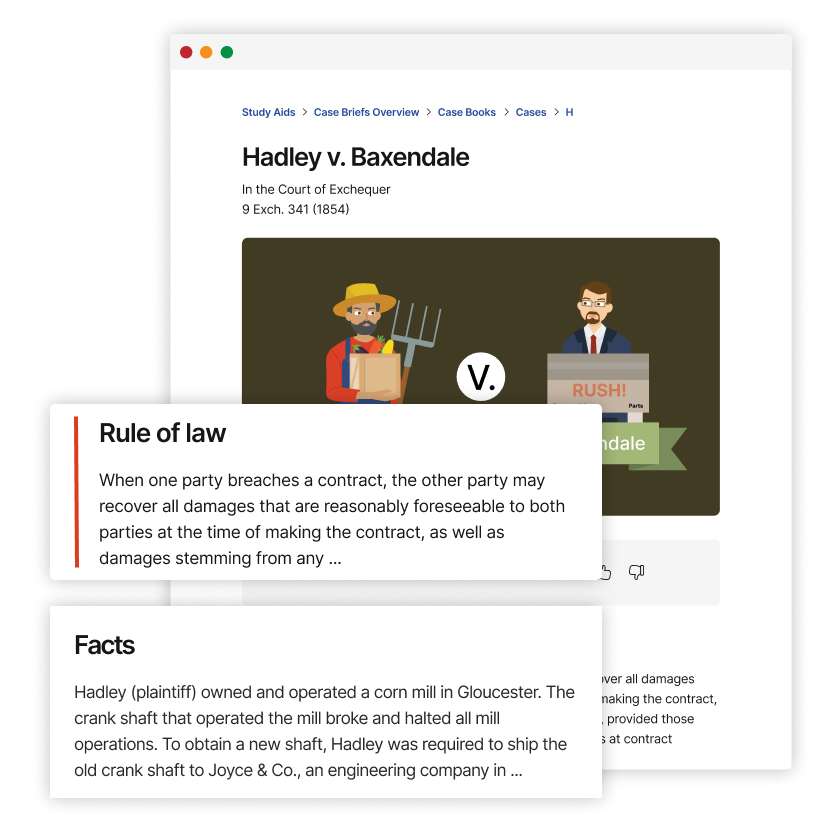Community for Creative Non-violence v. Reid
United States Supreme Court
846 F.2d 1485 Aff'd, 490 U.S. 730, 109 S.Ct. 2166 (1989)
- Written by John Yi, JD
Facts
The Community for Creative Non-violence (plaintiff) hired Reid (defendant) to create a sculpture to dramatize and publicize the plight of the homeless. At CCNV’s request, Reid submitted several sketches of the statue for approval. Consultations between Reid and CCNV led to a sculpture that was significantly different from what Reid had originally conceived. For a month and two weeks, Reid worked exclusively on the statue, in his own studio, with the help of various assistants whom he paid with funds provided by CCNV. On several occasions, CCNV representative visited Reid to check on Reid’s progress and to coordinate CCNV’s construction of the sculpture’s base. The statue was displayed for a month and returned to Reid’s studio for repairs. CCNV planned to take the statue on a tour of several cities to raise money for the homeless. Reid objected because he felt the material used for the sculpture, a decision demanded by cost and time constraints, was not sturdy enough for the tour. Reid refused to return the sculpture, and CCNV sued to recover it and to settle copyright ownership. The district court held the statue was a “work made for hire” under the Copyright Act of 1976 and that CCNV was the sole owner of the sculpture. The Circuit Court of Appeals for the District of Columbia reversed, and CCNV instituted this appeal.
Rule of Law
Issue
Holding and Reasoning (Marshall, J.)
What to do next…
Here's why 899,000 law students have relied on our case briefs:
- Written by law professors and practitioners, not other law students. 47,000 briefs, keyed to 994 casebooks. Top-notch customer support.
- The right amount of information, includes the facts, issues, rule of law, holding and reasoning, and any concurrences and dissents.
- Access in your classes, works on your mobile and tablet. Massive library of related video lessons and high quality multiple-choice questions.
- Easy to use, uniform format for every case brief. Written in plain English, not in legalese. Our briefs summarize and simplify; they don’t just repeat the court’s language.





